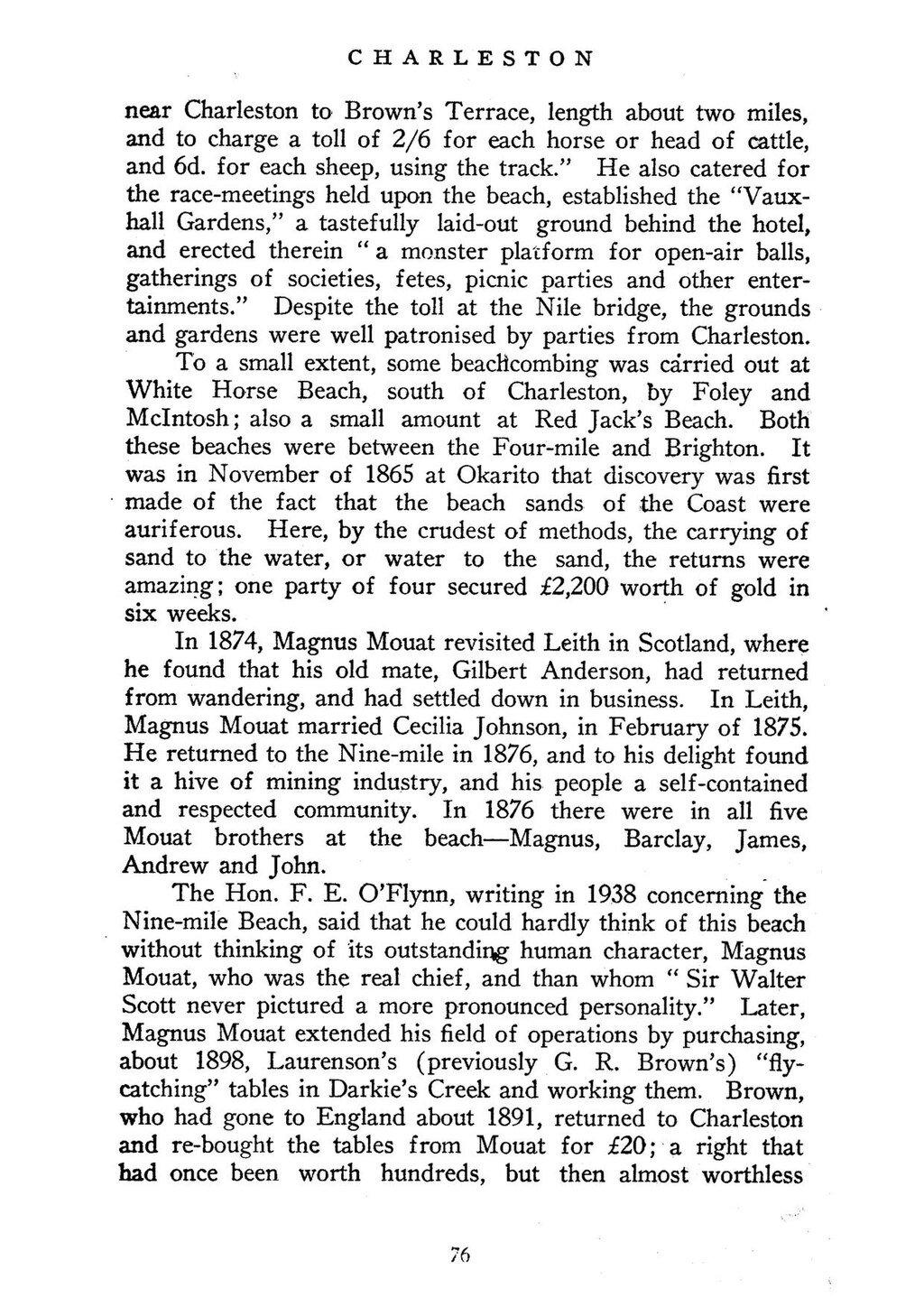CHARLESTON
near Charleston to Brown’s Terrace, length about two miles, and to charge a toll of 2/6 for each horse or head of cattle, and 6d. for each sheep, using the track.” He also catered for the race-meetings held upon the beach, established the “Vauxhall Gardens,” a tastefully laid-out ground behind the hotel, and erected therein “a monster platform for open-air balls, gatherings of societies, fetes, picnic parties and other entertainments.” Despite the toll at the Nile bridge, the grounds and gardens were well patronised by parties from Charleston.
To a small extent, some beachcombing was carried out at White Horse Beach, south of Charleston, by Foley and McIntosh; also a small amount at Red Jack’s Beach. Both these beaches were between the Four-mile and Brighton. It was in November of 1865 at Okarito that discovery was first made of the fact that the beach sands of the Coast were auriferous. Here, by the crudest of methods, the carrying of sand to the water, or water to the sand, the returns were amazing; one party of four secured £2,200 worth of gold in six weeks.
In 1874, Magnus Mouat revisited Leith in Scotland, where he found that his old mate, Gilbert Anderson, had returned from wandering, and had settled down in business. In Leith, Magnus Mouat married Cecilia Johnson, in February of 1875. He returned to the Nine-mile in 1876, and to his delight found it a hive of mining industry, and his people a self-contained and respected community. In 1876 there were in all five Mouat brothers at the beach—Magnus, Barclay, James, Andrew and John.
The Hon. F. E. O’Flynn, writing in 1938 concerning the Nine-mile Beach, said that he could hardly think of this beach without thinking of its outstanding human character, Magnus Mouat, who was the real chief, and than whom “Sir Walter Scott never pictured a more pronounced personality.” Later, Magnus Mouat extended his field of operations by purchasing, about 1898, Laurenson’s (previously G. R. Brown’s) “flycatching” tables in Darkie’s Creek and working them. Brown, who had gone to England about 1891, returned to Charleston and re-bought the tables from Mouat for £20; a right that had once been worth hundreds, but then almost worthless
76
